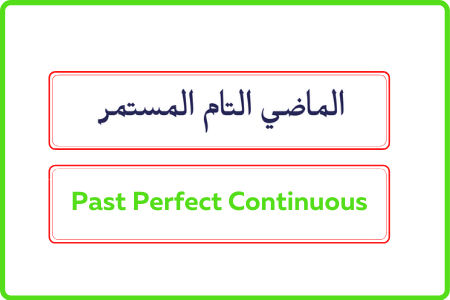زمن المستقبل المستمر Future Continuous Tense
المستقبل المستمر التكوين يتكون الفعل في زمن المستقبل المستمر من جزأين: صيغة المستقبل البسيط للفعل ‘to be’ + اسم الفاعل للفعل الرئيسي (مَصْدر الفعل + ing)
| الفاعل | المستقبل البسيط للفعل ‘to be’ | مَصْدر الفعل + ing |
|---|---|---|
| You | will be | watching |
| I | will be | staying |
المستقبل المستمر: To stay كمثال
| الإثبات | النفي | الاستفهام | الاستفهام المنفي |
|---|---|---|---|
| I will be staying. | I won’t be staying. | Will I be staying? | Won’t I be staying? |
| You will be staying. | You won’t be staying. | Will you be staying? | Won’t you be staying? |
| He will be staying. | He won’t be staying. | Will he be staying? | Won’t he be staying? |
| She will be staying. | She won’t be staying. | Will she be staying? | Won’t she be staying? |
| It will be staying. | It won’t be staying. | Will it be staying? | Won’t it be staying? |
| We will be staying. | We won’t be staying. | Will we be staying? | Won’t we be staying? |
| They will be staying. | They won’t be staying. | Will they be staying? | Won’t they be staying? |
استخدامات المستقبل المستمر
يُسْتَخْدَم المستقبل المستمر للإشارة إلى حدث أو فِعْل غير مُكتَمِل سيكون مستمرًا في وقت لاحق من الآن. فيما يلي عدة استخدامات مختلفة للمستقبل المستمر: يُمْكِن أن يُسْتَخْدَم المستقبل المستمر لتَصَور حدث مستمر في المستقبل.
أمثلة
- This time next week I will be sun-bathing in Bali.
- By Christmas I will be skiing like a pro.
- Just think, next Monday you will be working in your new job.
يُمْكِن أن يُسْتَخْدَم المستقبل المستمر للتنبؤ بأحداث مستقبلية.
أمثلة
- He’ll be coming to the meeting, I expect.
- I guess you’ll be feeling thirsty after working in the sun.
- You’ll be missing the sunshine once you’re back in England.
يُمْكِن أن يُسْتَخْدَم المستقبل المستمر في الجُمَل الاستفهامية للاستفسار بطريقة مهذبة عن معلومات تتعلق بحدث أو فِعْل مستقبلي.
أمثلة
- Will you be bringing your friend to the pub tonight?
- Will Jim be coming with us?
- Will she be going to the party tonight?
- Will I be sleeping in this room?
يُمْكِن أن يُسْتَخْدَم المستقبل المستمر للإشارة إلى الأحداث المستمرة التي نتوقع حدوثها في المستقبل.
Examples
- I’ll be seeing Jim at the conference next week.
- When he is in Australia he will be staying with friends.
- I’ll be eating with Jane this evening so I can tell her.
عندما يُسْتَخْدَم المستقبل المستمر مع still، فإننا عادة ما نشير إلى حدث مستمر الآن ولكننا نتوقع استمراره لفترة من الوقت في المستقبل.
Examples
- In an hour I’ll still be ironing my clothes.
- Tomorrow he’ll still be suffering from his cold.
- Next year will she still be wearing a size six?
- Won’t stock prices still be falling in the morning?
- Unfortunately, sea levels will still be rising in 20 years.

